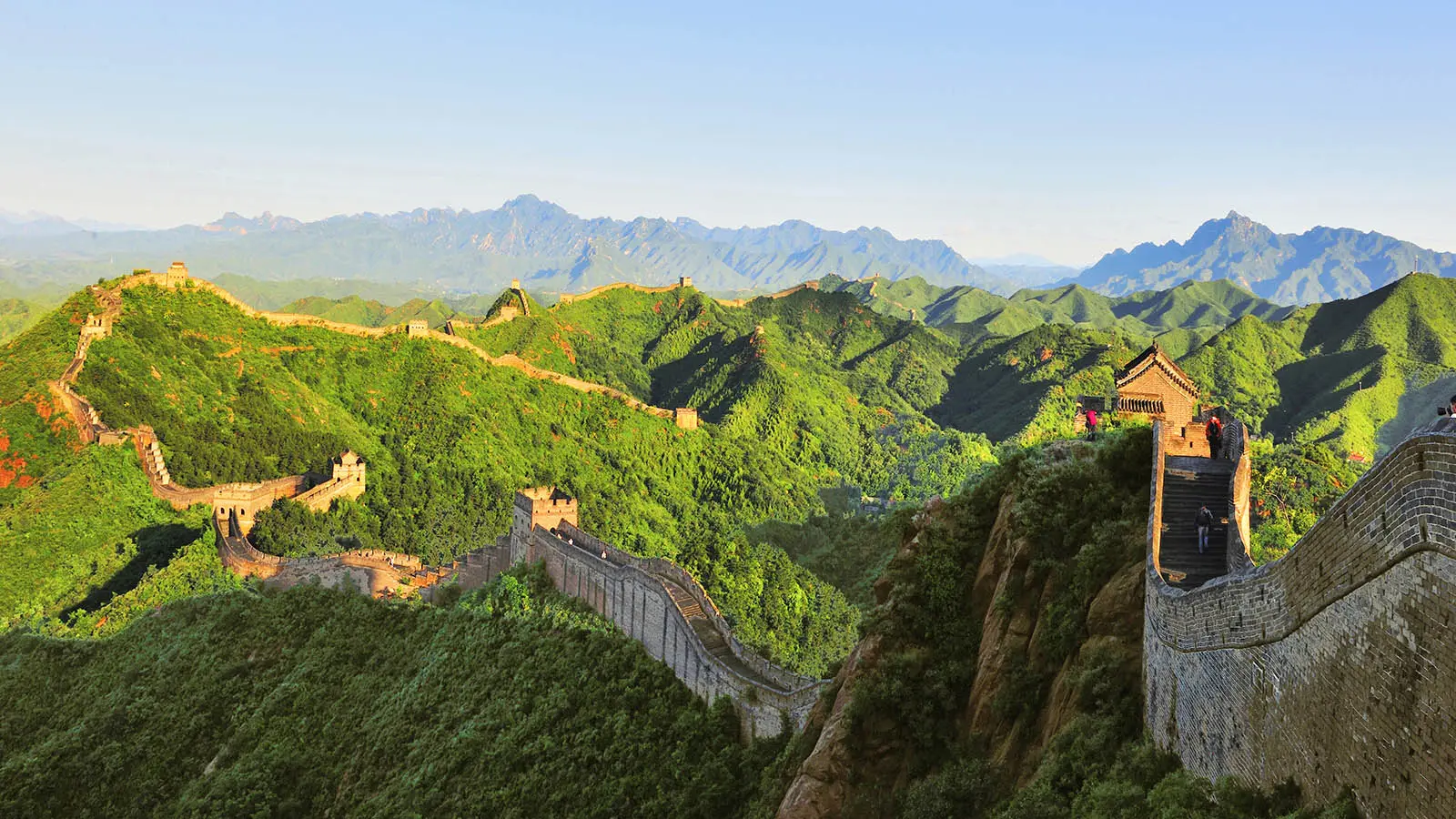The Great Wall

The great wall of China is the greatest architectural project in the history of human civilization. It was built more than 2000 years ago in the spring and Autumn period and the Warring States period. After the Qin Dynasty unified China, it became the Great Wall. In the Han and Ming Dynasties, it was built on a large scale. Its vast number of projects and magnificent momentum can be called a world miracle. As time goes by, things change. Now when you climb the ruins of the former great wall, you can not only witness the majestic appearance of the great wall winding through the mountains, but also appreciate the great wisdom and courage of the Chinese nation in creating history.
In December 1987, the Great Wall was listed in the world heritage list.
The main project of the Great Wall is a tall city wall stretching for thousands of miles. Most of them are built at the top of the mountain. Along the ridge, the winding and endless mountains are outlined clearly, creating a galloping, leaping and magnificent dragon, which has become the symbol of the Chinese nation. On the city wall, there are hundreds of majestic passes and thousands of enemy towers and beacon towers, which break the monotony of the city wall and make the ups and downs of the terrain more magnificent and steep, full of great artistic charm.
Among the Great Wall landscapes around, the Badaling Great Wall in Beijing is particularly strong and well preserved. It is the best place to watch the Great Wall. In addition, there are Jinshanling Great Wall, Mutianyu Great Wall, Simatai Great Wall, Gubeikou Great Wall, etc. Tianjin Huangyaguan Great Wall, Hebei Shanhaiguan and Gansu Jiayuguan are also famous scenic spots of the Great Wall.
The great wall of China is a national military defense project in the era of cold weapon war, which has been built for the longest time and the largest quantity in the world. It condenses the blood, sweat and wisdom of our ancestors and is the symbol and pride of the Chinese nation.
According to historical records, since the Warring States period, more than 20 vassal states and feudal dynasties have built the Great Wall. The earliest was the state of Chu. In order to defend the northern nomads or enemy countries, it began to build the Great Wall. Later, Qi, Yan, Wei, Zhao, Qin and other countries also began to build their own great wall for the same purpose. After the Qin Dynasty unified the six countries, the first emperor of Qin sent the famous general Meng Tian to attack the Huns in the north and connect the great walls of various countries, stretching for more than ten thousand miles from Yao in the west to Liaodong in the East. Therefore, it was called the Great Wall, which is the origin of the name of "the Great Wall". But what we see today is mainly the Ming Great Wall.
Qin Shihuang used 300000 people to build the Great Wall, creating a miracle in the history of human architecture. The construction of the Great Wall objectively played a positive role in preventing the Huns from invading the South and protecting the economic and cultural development of the Central Plains.
The construction of the Great Wall continued in the Han Dynasty. From Emperor Wen to Emperor Xuan, it has been built into a great wall, which starts from Dawan Ershi city in the West and ends at the North Bank of Heilongjiang in the East, with a total length of nearly 10000 kilometers. Half of the ancient Silk Road is along this great wall, which is the longest great wall in history. In the Ming Dynasty, in order to prevent the invasion of Tatars and wati people, the construction of the Great Wall was never interrupted. From Hongwu to Wanli, after 20 large-scale construction, a 6350 km side wall was built, starting from Jiayuguan in Gansu in the West and Hushan in Liaodong in the East. (but it is reported that the pedometer of a Chinese who walked the whole length of the Great Wall in 1990 showed 6700 kilometers.)
The Great Wall has high tourism value and historical and cultural significance. Now, after careful development and restoration, Shanhaiguan, Juyongguan, Badaling, Simatai, Mutianyu, Jiayuguan and other places have become well-known tourist attractions at home and abroad. When you look into the distance from high, you can see the ancient battlefield in front of you. Today, the Great Wall, together with the pyramids of Egypt, the Colosseum of Rome and the Leaning Tower of Pisa in Italy, is known as the seven wonders of the world. It is a monument and crystallization of wisdom of the ancient culture of the Chinese nation, symbolizing the blood inheritance and national spirit of the Chinese nation.